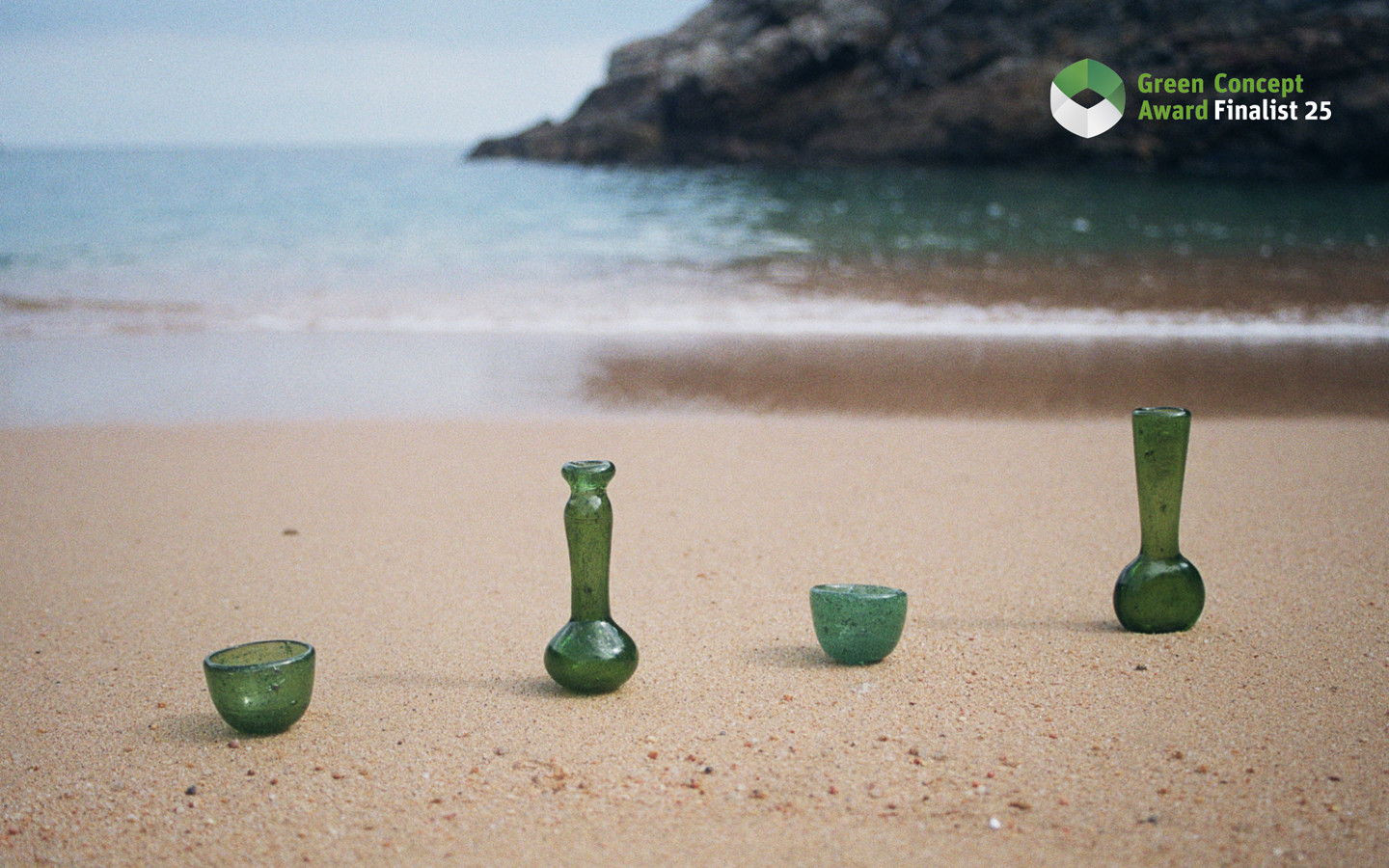Sea Glass
Un vidrio captador de carbono fabricado a partir de microalgas.
El vidrio marino se fabrica a partir de un tipo de microalga que extrae dióxido de silicio del agua circundante, precipitándolo en paredes celulares de sílice. El sílice, principal componente del vidrio, suele obtenerse de la arena. Al cultivar sílice en lugar de extraerlo, podemos reducir la dependencia de la minería de arena, destructiva para el medio ambiente, y capturar cantidades sustanciales de CO₂ a través de la fotosíntesis de las algas. Tras una exhaustiva investigación científica y de materiales, se creó el vidrio marino. Fabricado con un 90% de sílice procedente de microalgas, conserva las propiedades tradicionales del vidrio y requiere menos energía para fundirse.
Empresa/Institución
elisava
Design and engineering to impact people, society and the planet. At Elisava we train designers with a creative profile, critical thinking and an exploratory vision of the world, capable of questioning and conversing with other people in the social, productive, scientific or cultural environment. Our students will be trained to design products, services and environments that foster a more inclusive and sustainable society.

País
España
Designer(s)
Paolina Kühr

Paolina Kühr is a Paris-born material designer and researcher exploring the symbiotic potential between natural ecosystems and human innovation. After studying biology at Freie Universität Berlin and University of Milan, an internship in bacterial-cellulose leather sparked her interest in bio-based materials. She later pursued a Master’s in Design through New Materials at Elisava in Barcelona, founding Orsa Studio to reimagine materiality with nature. Her research focuses on microalgae-derived glass, aiming to create carbon-negative materials that support ecological resilience.


